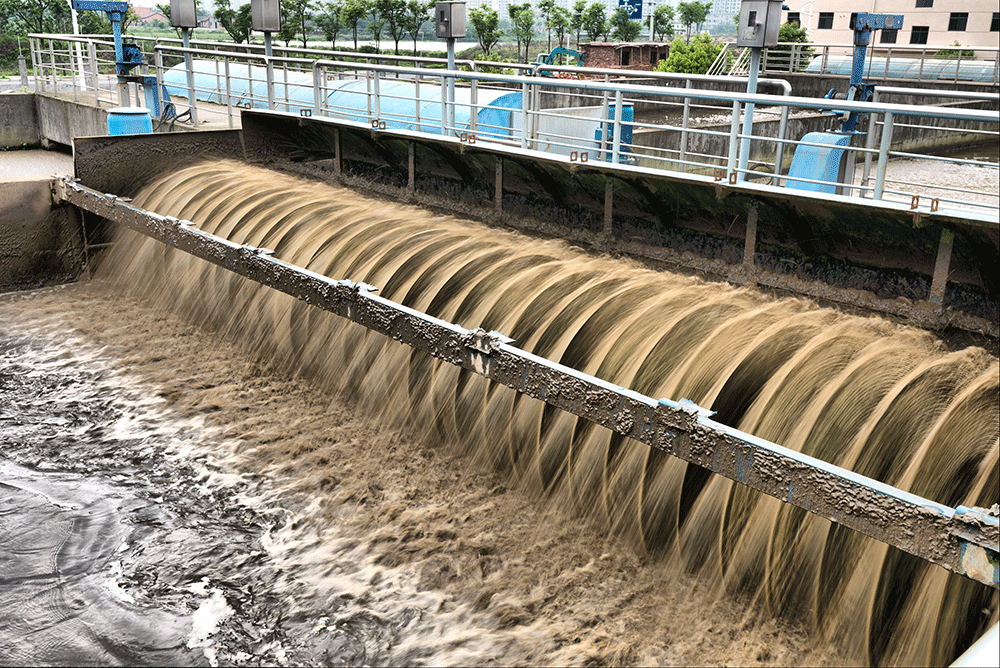How To Generate Money From Sewage Sludge
Sewage sludge, a by-product of wastewater treatment, contains significant amounts of organic matter, nutrients, and minerals that can be beneficially recycled in agriculture and other industries.
Recycling sewage sludge is a sustainable and cost-effective approach to managing the waste generated by wastewater treatment plants. This practice not only reduces the amount of waste sent to landfills, but also conserves valuable resources, reduces environmental impacts, and promotes soil health and fertility.
One of the primary benefits of recycling sewage sludge is its ability to provide valuable nutrients and organic matter to soil, which can improve soil fertility, structure, and water-holding capacity.
Sewage sludge contains essential plant nutrients such as nitrogen, phosphorus, and potassium, as well as micronutrients such as zinc, copper, and iron. By recycling sewage sludge, farmers can reduce their reliance on chemical fertilizers and improve the quality and yield of their crops.
Another benefit of recycling sewage sludge is its ability to sequester carbon in soil, thereby mitigating climate change. Soil is a major reservoir of carbon, and increasing soil organic matter through the application of sewage sludge can help to reduce greenhouse gas emissions and improve soil resilience to climate change.
Recycling sewage sludge also has economic benefits, as it reduces the cost of waste disposal and can generate revenue through the sale of compost and other products derived from sewage sludge. In addition, recycling sewage sludge can create jobs in the waste management and agricultural sectors, and support local economies.
However, it is important to note that the recycling of sewage sludge should be done in a safe and responsible manner. Proper treatment and management of sewage sludge is necessary to ensure that it is free from harmful pathogens and contaminants, and does not pose a risk to human health or the environment. Regulations and guidelines have been put in place to ensure the safe and effective recycling of sewage sludge, including testing for contaminants and onitoring of application rates.
Recycling sewage sludge is an important practice that offers a range of benefits, including improving soil fertility, mitigating climate change, and reducing waste and costs. While it requires careful management and regulation, the recycling of sewage sludge can provide a valuable resource for agriculture and other industries, and contribute to a more sustainable and circular economy.
Ways To Generate Income From Sewage Sludge

Sewage sludge, also known as biosolids, can be used in a number of ways to generate money. Here are some potential methods:
(1) Land application
Sewage sludge can be applied to agricultural land as a fertilizer. This can reduce the need for commercial fertilizers and improve soil health, resulting in increased crop yields. In some cases, farmers may be willing to pay for the sludge. Land application of sewage sludge, also known as biosolids, can be a cost-effective and environmentally sound method of managing wastewater treatment plant byproducts.
This practice involves applying treated sludge onto agricultural land as a soil amendment to improve soil fertility and structure. Land application can also generate income for wastewater treatment facilities by selling the biosolids to farmers as a source of organic matter and nutrients.
Before land application, the biosolids undergo a series of treatments to remove pathogens, heavy metals, and other contaminants. The resulting product is typically rich in organic matter, nitrogen, phosphorus, and other micronutrients that are essential for plant growth. The biosolids can be applied to agricultural land using a variety of methods, including surface spreading, injection, and incorporation into the soil.
By selling biosolids to farmers, wastewater treatment facilities can generate income that can offset the cost of treatment and disposal. The price of biosolids can vary depending on factors such as the nutrient content, transportation costs, and market demand. Some wastewater treatment facilities also offer free biosolids to local farmers as a way to reduce disposal costs and promote sustainable agriculture.
In addition to generating income, land application of biosolids offers several environmental benefits. By applying biosolids to agricultural land, nutrients are recycled back into the soil and can be used to support crop growth.
This reduces the need for synthetic fertilizers, which can have negative environmental impacts such as water pollution and greenhouse gas emissions. Land application of biosolids can also improve soil health and reduce erosion, leading to better crop yields and improved environmental quality.
Land application of sewage sludge can be an effective way to generate income for wastewater treatment facilities while also promoting sustainable agriculture and reducing environmental impacts. As regulations and guidelines for biosolid use continue to evolve, it is important for facilities to stay up-to-date on best practices and ensure that land application is carried out safely and responsibly.
(2) Composting
Sewage sludge can be composted with other organic materials to create a nutrient-rich soil amendment that can be sold to gardeners and landscapers. Composting sewage sludge can be a lucrative business for those interested in generating income from waste management. Sewage sludge is the byproduct of wastewater treatment, and it can be composted to produce a nutrient-rich organic fertilizer that can be sold to farmers and gardeners.
To start a composting business with sewage sludge, you will need to acquire the necessary permits and licenses from your local government. You will also need to establish a composting facility that meets the environmental and safety regulations. Once you have the necessary infrastructure in place, you can begin composting sewage sludge.
Composting involves mixing the sludge with other organic materials such as leaves, grass, and food waste. The mixture is then allowed to decompose over time, with regular turning and watering to ensure optimal conditions for the breakdown of the organic matter.
As the composting process continues, the mixture will begin to generate heat, which is a sign that the organic matter is breaking down and turning into a rich, nutrient-dense fertilizer. Once the compost is fully matured, it can be sold to farmers and gardeners as a soil amendment.
The amount of income generated from composting sewage sludge will depend on various factors such as the size of your composting facility, the volume of sewage sludge you are able to process, and the demand for organic fertilizer in your area. However, with proper planning and management, a composting business can be a profitable venture.
In addition to generating income, composting sewage sludge also has environmental benefits. By diverting the sludge from landfills, you are helping to reduce the amount of waste that ends up in these facilities.
Composting also reduces greenhouse gas emissions by preventing the methane gas that is produced by decomposing organic matter from being released into the atmosphere.
Composting sewage sludge can be a profitable business opportunity for those interested in waste management and sustainable agriculture. By transforming this waste product into a valuable resource, you can generate income while also contributing to a healthier environment.
(3) Anaerobic digestion
Sewage sludge can be digested in an anaerobic digester to produce biogas, which can be used to generate electricity or heat. The resulting digestate can be used as a fertilizer or soil amendment. Anaerobic digestion is a process that involves the breakdown of organic matter in the absence of oxygen, resulting in the production of biogas and digestate.
Sewage sludge is a potential source of organic matter that can be used for anaerobic digestion, leading to the generation of income. Here are some ways in which income can be generated from sewage sludge through anaerobic digestion:
i. Biogas production: Anaerobic digestion of sewage sludge can produce biogas, which is a mixture of methane and carbon dioxide. Biogas can be used as a fuel for electricity generation or sold as a renewable energy source. This can provide a source of income for the operator of the anaerobic digestion plant.
Read Also: How To Generate Money From Human Waste
ii. Fertilizer production: The digestate that is produced as a byproduct of anaerobic digestion can be used as a fertilizer. This can provide a source of income for the operator of the anaerobic digestion plant as well as for farmers who purchase the fertilizer.
iii. Carbon credits: Anaerobic digestion of sewage sludge can reduce greenhouse gas emissions by producing biogas, which can replace fossil fuels. This can generate carbon credits that can be sold on the carbon market, providing a source of income for the operator of the anaerobic digestion plant.
iv. Waste disposal: Sewage sludge is a waste product that needs to be disposed of properly. Anaerobic digestion can provide a solution for sewage sludge disposal while generating income at the same time.
Anaerobic digestion of sewage sludge can provide a source of income through the production of biogas, fertilizer, and carbon credits, as well as through waste disposal. This makes it a promising technology for generating income from a waste product while also promoting sustainability.
(4) Incineration
Sewage sludge can be incinerated to produce ash, which can be used in construction materials or as a soil amendment. Incineration of sewage sludge is a method of generating income by converting the sludge into ash, which can be sold as a fertilizer or used as a construction material. This process involves burning the sludge at high temperatures to reduce its volume and convert it into ash, which is more stable and easier to handle than the original sludge.
One of the benefits of incineration is that it reduces the volume of the sludge by up to 90 percent, making it easier and more cost-effective to transport and dispose of. Additionally, the ash produced by incineration can be used as a fertilizer or construction material, which can generate revenue for the incineration facility.
There are several factors to consider when using incineration to generate income from sewage sludge. First, the incineration process requires significant energy input, which can be expensive. Therefore, it is important to optimize the process to ensure maximum energy efficiency and minimize costs.
Second, the ash produced by incineration must meet certain quality standards to be marketable as a fertilizer or construction material. This may require additional processing or treatment to remove any contaminants or impurities.
Finally, it is important to consider the environmental impact of incineration. The process produces emissions and ash residue, which must be managed and monitored to ensure they do not pose a risk to public health or the environment.
Incineration can be a viable method for generating income from sewage sludge by converting it into ash that can be sold as a fertilizer or used as a construction material. However, it is important to carefully consider the costs, quality standards, and environmental impact of the process to ensure its economic viability and sustainability.
(5) Extraction of valuable metals
Sewage sludge contains small amounts of valuable metals such as gold, silver, and platinum. These metals can be extracted and sold. Sewage sludge, which is the solid residue left after the treatment of wastewater, is a rich source of nutrients, organic matter, and energy. However, it also contains valuable metals such as copper, silver, and gold, which can be extracted and sold for a profit.
One of the most common methods for extracting metals from sewage sludge is through a process called biosorption. Biosorption involves using microorganisms, such as bacteria or fungi, to bind to the metal ions present in the sludge. The microorganisms can then be harvested and the metal ions recovered using a variety of techniques such as acid leaching or electrochemical deposition.
The extracted metals can then be sold as raw materials to various industries such as electronics, jewelry, and manufacturing. For example, copper is a widely used metal in the production of electrical wires and cables, and silver is used in the production of solar panels.
In addition to generating income from the sale of extracted metals, the extraction process also has environmental benefits. By removing metals from sewage sludge, the risk of these metals contaminating the environment is reduced, and the sludge can be safely disposed of or used as fertilizer.
Read Also: Proper Ways Of Controlling Water Pollution
Moreover, the extraction of valuable metals from sewage sludge can also contribute to the circular economy by reducing the reliance on mining for raw materials. This is particularly important as many of these metals are becoming increasingly scarce, and extracting them from sewage sludge provides an alternative source that is more sustainable and environmentally friendly.
Extracting valuable metals from sewage sludge is a promising way to generate income while also providing environmental benefits. As more industries become aware of the potential of sewage sludge as a source of raw materials, we can expect to see increased interest and investment in this field.
(6) Production of biosurfactant
Biosurfactants can be produced from sewage sludge and sold as an alternative to chemical surfactants in a variety of industries. Biosurfactants are surface-active compounds produced by microorganisms that have the ability to reduce the surface tension of liquids. They have a wide range of industrial applications, including their use as emulsifiers, dispersants, and wetting agents.
One potential application of biosurfactants is in the treatment of sewage sludge. Sewage sludge is a byproduct of wastewater treatment that is rich in organic matter and nutrients. It is typically disposed of in landfills or incinerated, but these methods can be expensive and have environmental impacts.
Producing biosurfactants from sewage sludge could provide a way to generate income from this waste product while also reducing the environmental impact of its disposal. The process involves isolating microorganisms from the sludge that are capable of producing biosurfactants, and then cultivating these microorganisms in a controlled environment to optimize biosurfactant production.
The biosurfactants can then be extracted and purified, and sold to companies in a variety of industries that use them as ingredients in their products. These industries include the cosmetics, food, and agriculture industries, among others.
There are several challenges to producing biosurfactants from sewage sludge, including identifying the most effective microorganisms, optimizing the cultivation conditions, and developing efficient extraction and purification methods. However, with the growing demand for sustainable and environmentally friendly products, the potential benefits of this approach are significant.
(7) Production of biochar
Sewage sludge can be converted into biochar, a type of charcoal that can be used as a soil amendment to improve soil fertility and water retention. Producing biochar from sewage sludge is one way to generate income from this waste material. Biochar is a type of charcoal that is produced by heating organic material in the absence of oxygen. It is a highly porous material that can be used as a soil amendment to improve soil fertility and water retention.
To produce biochar from sewage sludge, the sludge is first dried and then heated in a kiln or pyrolysis reactor at high temperatures (usually between 400-700°C) in the absence of oxygen. The heat causes the organic matter in the sludge to break down and form char, while also releasing gases such as carbon dioxide and methane. The gases can be captured and used for energy production.
The resulting biochar can be sold as a soil amendment to farmers or used in other applications such as filtration or carbon sequestration. The process of producing biochar from sewage sludge can also help to reduce the volume of waste material that needs to be disposed of, which can save on disposal costs.
However, it is important to note that producing biochar from sewage sludge requires careful handling to avoid the release of harmful pollutants such as heavy metals and pathogens.
It is also important to ensure that the biochar meets certain quality standards to ensure its safety and effectiveness as a soil amendment. It’s important to note that sewage sludge must be treated properly to ensure it is safe for human and environmental health before any of these methods are employed.
Read Also: Power Up Your Day with Full Throttle Energy Drink



